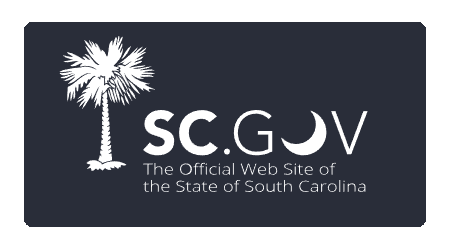Legislative Menu
-
Chamber Video
- Video Schedule
- Video Archives
Legislative Menu
South Carolina Law > Code of Laws > Title 55
South Carolina Code of Laws
Unannotated
Title 55 - Aeronautics
CHAPTER 13
Protection of Airports and Airport Property
SECTION 55-13-5.Public use airport maps; review of plans for development.
The division shall create a map of each public use airport in the State showing airport property, runways, taxiways, runway approach and departure zones, airport safety zones and airport land use zones which are extended zones from each runway in which land use considerations should be made to prevent incompatible uses with aircraft and airport operations. These maps should be updated as needed, but at least every five years.
The division shall provide a copy of these maps to the county council, city council, the respective planning agencies, and airport commission, and the agencies responsible for the granting of plat subdivision approval and building permits having jurisdiction over the airport, or having jurisdiction in the vicinity of the airport under aircraft flight profiles arriving and departing the airport.
Each governmental body or agency receiving these maps shall ensure notice of any planned development, plat approval, or building permit issued in an airport safety zone or airport land use zone be provided to the division for review. In the event that an activity is enjoined or a condition is abated by the division contrary to a local governmental body's decision, the governmental body proposing the land use decision shall have the right to seek cost recovery from the party responsible for creating the condition or the enjoinment or abatement of the activity. Neither the division or a local government shall be required to post a bond or other financial security as a condition to enjoining or abatement of a condition surrounding a public use airport. Land use decisions by county and municipal governments and local agencies shall take into account the presence of airport land use zones and airport safety zones and consult with the division, when possible, prior to making land use decisions within airport land use zones and airport safety zones. If the division provides comments, within thirty days, the governmental body must respond substantively in writing to each comment, separately stated before the issuance of the permit or approval. If the division believes the proposed project may have a substantial impact on aviation safety, create an imminent or foreseeable hazard to aviation safety, or result in a nuisance or an incompatible land use, the division may seek relief, including enjoining the activity or abatement of the condition giving rise to the division's comments.
Land use decisions by county and municipal governments and local agencies shall take into account the presence of airport land use zones. Land use decisions in airport land use zones should avoid and minimize the impact to interruption of aircraft operations, aviation safety, including approach, landing, takeoff, and departure criteria established by the Federal Aviation Administration or nationally recognized industry standards.
HISTORY: 2012 Act No. 270, Section 6, eff June 18, 2012.
SECTION 55-13-10.Authority of political subdivisions to make rules and regulations.
The governing body of a political subdivision in which there is an airport may make reasonable rules and promulgate regulations as authorized in Section 6-24-710(5) prohibiting, within a reasonable distance from the base or airfield, the erection of a building, tower or other structure or the allowing of natural growth or other hazard to aircraft, above certain maximum heights, which shall be increased at varying distances from the airport. Counties or municipalities may restrict residential or commercial development inside the airport safety zones of a civil airport and prohibit the use of land in a manner which could cause interference with radio communication between aircraft and the airport or landing areas, confuse or impair visibility in the vicinity of the airport or landing areas, or otherwise endanger the landing, taking-off, or maneuvering of aircraft using the airport or landing areas. Political subdivisions also may assist with the protection of Department of Defense defined accident potential areas from encroachments in accordance with federal and state regulations.
HISTORY: 1962 Code Section 2-131; 1952 Code Section 2-131; 1951 (47) 68; 2012 Act No. 270, Section 6, eff June 18, 2012.
Effect of Amendment
The 2012 amendment rewrote the section.
SECTION 55-13-20.Hearing prerequisite to effectiveness of rules and regulations.
The rules and regulations authorized by Section 55-13-10 become effective only after a public hearing, notice, and comment of which must be published in accordance with state law.
HISTORY: 1962 Code Section 2-132; 1952 Code Section 2-132; 1951 (47) 68; 2012 Act No. 270, Section 6, eff June 18, 2012.
Effect of Amendment
The 2012 amendment rewrote the section.
SECTION 55-13-30.Penalties for violation of rules and regulations.
It shall be unlawful for a person to wilfully or intentionally violate these rules and regulations and a person violating them, upon conviction, must be fined not exceeding one thousand dollars, or imprisoned for not more than thirty days. A person who violates these rules and regulations may be liable for a civil penalty of one thousand dollars. Each day of the violation constitutes a separate offense.
HISTORY: 1962 Code Section 2-133; 1952 Code Section 2-133; 1951 (47) 68; 2012 Act No. 270, Section 6, eff June 18, 2012.
Effect of Amendment
The 2012 amendment rewrote the section.
SECTION 55-13-40.Trespassing, parking, driving, or drag racing on airport property.
(1) It is unlawful, without proper authority, for any person to trespass, park, drive, or drag race upon airport property.
(2) A person violating the provisions of this section, upon, conviction must be fined not less than five hundred dollars or more than two thousand dollars or imprisoned for not less than two months or more than six months or both in the discretion of the trial judge. In addition to this penalty, the driver of a vehicle that violates the provisions of this section, upon conviction, entry of a plea of guilty or forfeiture of bail shall have his driver's license revoked for a period of one year. A person violating the provisions of this section by acquiescing in or permitting the driving of his car, upon conviction, must be fined not more than one thousand dollars or imprisoned for a period not more than thirty days, or both, in the discretion of the court and, in addition, shall have his driver's license and the registration of his vehicle suspended for a period of three months.
HISTORY: 1962 Code Section 2-161; 1972 (57) 2678; 2012 Act No. 270, Section 6, eff June 18, 2012.
Effect of Amendment
The 2012 amendment rewrote the section.
 Loading
Loading



